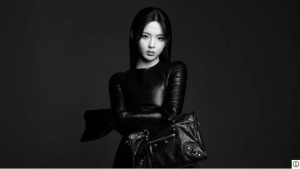An unlikely friendship with Chinese artist Zhang Chongren helped the creator of the Belgian comic strip defy stereotypes — in 1934.

The Tintin comic book series, telling the global adventures of the Belgian boy reporter, are world-renowned, but the reputation of its creator Georges Rémi — better known by his pen name “Hergé” — has been taking a battering.
In 2007, the centenary of Hergé’s birth, the United Kingdom’s Commission for Racial Equality recommended that “Tintin in the Congo” (1931) be withdrawn from sale due to its “hideous racial prejudice,” as it portrayed the Congolese as kindly but ignorant children in need of the white man’s governance. Chinese characters fared little better in the comics, depicted in “Tintin in the Land of the Soviets” (1930) as pigtailed torturers.
But just four years after the publication of “Tintin in the Land of the Soviets,” Hergé’s “The Blue Lotus” saw a complete about-face in the artist’s portrayal of Chinese people and culture. First published as a serialized comic strip in 1934, Tintin’s pursuit of a gang of international opium-smugglers through the dens and alleys of Shanghai is a nuanced and underrated dive into the city in the Republican era. Hergé’s detailed pen captures Shanghai’s turbulent politics, secluded opium dens, segregated International Settlements, Sikh and British police enforcers, and riotously colorful banner-streaked streets. This change was due to an unlikely friendship with the Chinese artist Zhang Chongren, who became Hergé’s mentor and guide. Continue to read the full article here
– This article originally appeared on Sixth Tone.





